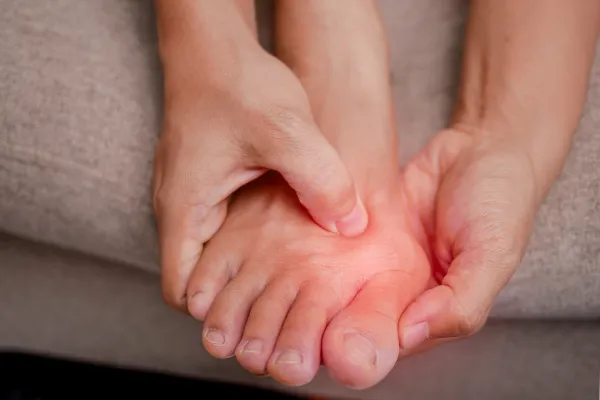
Bunions Making Walking Miserable? Here’s What You Can Do About It
That annoying bump on the side of your big toe? It’s more than just a cosmetic issue. If you’ve got a bunion, you already know it can make everyday walking feel like hard work.
Maybe your favourite shoes don’t fit anymore. Maybe it’s a dull ache by lunchtime, or sharp pain after a short walk to the shops. Whatever the case—you’re not alone. And more importantly, you don’t have to just live with it.
Let’s break down what’s going on—and how our team at The Springfield Clinic in Bishopbriggs can help you feel like yourself again.
First Things First: What Is a Bunion?
A bunion (or hallux valgus, if you like the technical term) happens when the joint at the base of your big toe shifts out of place. This causes the toe to lean inwards, creating that hard, bony bump on the side.
Over time, that shift can make the joint stiff, sore, and swollen. And because it messes with the natural shape of your foot, it can throw off your balance and affect how you walk.
Bunions can:
Make shoes feel tight or uncomfortable
Cause redness, inflammation or calluses
Lead to pain in other areas like the ball of your foot or your knees
Why Do Bunions Happen?
A few common culprits include:
Genetics – Thanks, Mum or Dad!
Poor footwear – especially narrow or high-heeled shoes
Flat feet or poor foot mechanics
Arthritis or other joint issues
So, no—this isn’t just about “bad shoes.” In many cases, it’s a mix of factors, and our job is to help you get to the bottom of it.
What Can You Do About It?
Here at The Springfield Clinic, we’ve seen bunions at every stage—and helped people just like you get back on their feet (literally).
Here’s how we approach bunion care:
1. Full Assessment & Gait Analysis
We take a close look at how your feet move when you walk using Gait Analysis in Bishopbriggs. This helps us understand what’s causing pressure and pain, and whether your bunion is affecting your balance or joints further up.
2. Tailored Treatment Plan
No two feet are the same. We’ll talk you through options that can include:
Custom orthotics (supportive insoles) to correct your foot mechanics
Padding and footwear advice to reduce rubbing and pain
Strengthening and stretching exercises to ease strain
Shock wave therapy (for related soft tissue pain)
These non-surgical options work well for many patients—especially when bunions are caught early.
3. Honest Advice About Surgery
In some cases, surgery might be needed if the bunion is severe or causing major disruption to your daily life. We’ll talk through this without pressure, and refer you to trusted specialists if needed.
Why Choose Us?
Our lead podiatrist, Shaun Boyle, has years of experience treating musculoskeletal foot issues—including bunions—using a mix of modern tools and a personal, down-to-earth approach.
At our foot clinic in Bishopbriggs, we don’t just treat your bunion. We look at the bigger picture—your lifestyle, your goals, and what matters most to you.
Ready to Stop Letting That Bunion Hold You Back?
We know how frustrating bunion pain can be—especially when it starts getting in the way of the things you enjoy. Whether it’s walking the dog, playing with your kids, or just getting around comfortably, we’re here to help you take the next step forward.
Book a consultation with our team today. Let’s find a solution that gets you moving confidently again.
Final Thought:
You don’t have to wait until the pain gets worse. With the right support, bunion pain can be managed—and your feet can feel better.



